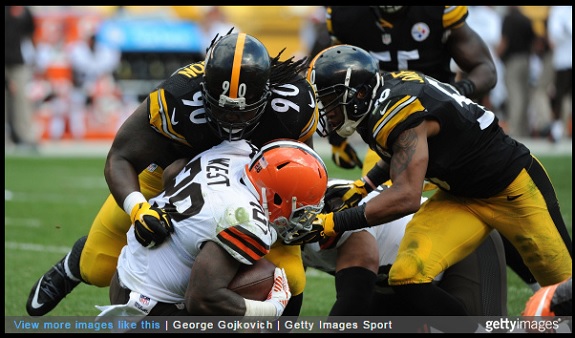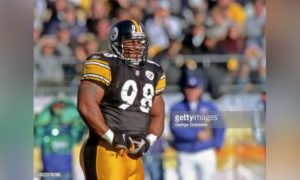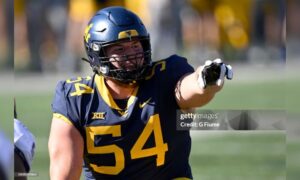The Pittsburgh Steelers spent much of the time between their last playoff victory and now replenishing their roster in preparation for their next chance to make a push for a championship. Last season showed signs that the team was on its way out of that transitional phase after posting a division-winning 11-5 record following back to back .500 seasons.
Still, the Steelers failed to make it out of the divisional round, and have lost their last three postseason contests, dating back to Super Bowl XLV. They followed up that 2010 run with a 12-4 wildcard campaign that saw a first-round exit, and subsequently failed to return to the playoffs the following two years.
So how close might they be to righting the ship and returning to that place that they have been more than any other franchise—that is, holding up the Lombardi Trophy? One way to attempt to measure that would be to compare how this season’s lineup projects against past teams.
For these purposes, it might be helpful to cite both the 2008 and 2010 teams, which are, respectively, the teams that have claimed their most recent Super Bowl championship and their most recent Super Bowl appearance.
There’s no doubt in my mind that this particular discussion will draw some strong opinions, because we’re now up to the nose tackle position, which for so long was fielded by Pro Bowler Casey Hampton, and is now served by Steve McLendon.
Hampton was in many ways the prototypical nose tackle, or at least the prototype of what the Steelers were looking for out of the position in that era of the NFL, with the personnel that they had to pair with him.
Much of his game was predicated on pure size and strength, as would be the logical assumption for a player whose helmet, the apocryphal tales say, had to be custom made for his massive head.
Hampton didn’t often rack up a great deal of his own statistics—the number of Pro Bowls that he went to in spite of that is a testament to how good he actually was—but as the readers of this site no doubt understand, his primary assignment on any given play would be to occupy blockers and create alleys for the second level of the defense to make plays.
The Steelers used this blueprint to get themselves to three Super Bowls, winning two of them. The final trip to the championship game involved the defense giving up one of the lowest rushing totals in history, for which Hampton deserves much credit.
But nobody plays forever, and the Steelers felt his time was up—and McLendon’s time had come—in 2013. Hampton’s contract expired, and on the back of a strong performance in a rotational role, McLendon was given a three-year contract.
McLendon’s game is not the same, and the defense has had to adapt around that. He often described himself as a mix between the power game of Hampton, the finesse game of Jay Ratliff, and the mental game of Chris Hoke.
Perhaps what he has had to offer is a somewhat diluted concoction of the three, but the truth is that he has been one of the Steelers’ defenders over the past two years, and is not responsible for a perceived decline.
McLendon’s chief concern is his health after missing six games and parts of others due to multiple injuries over the past two years. He is a nose tackle that the Steelers can undoubtedly win with, and is perhaps more suited for the way the game is played in 2015 compared to 2005.








